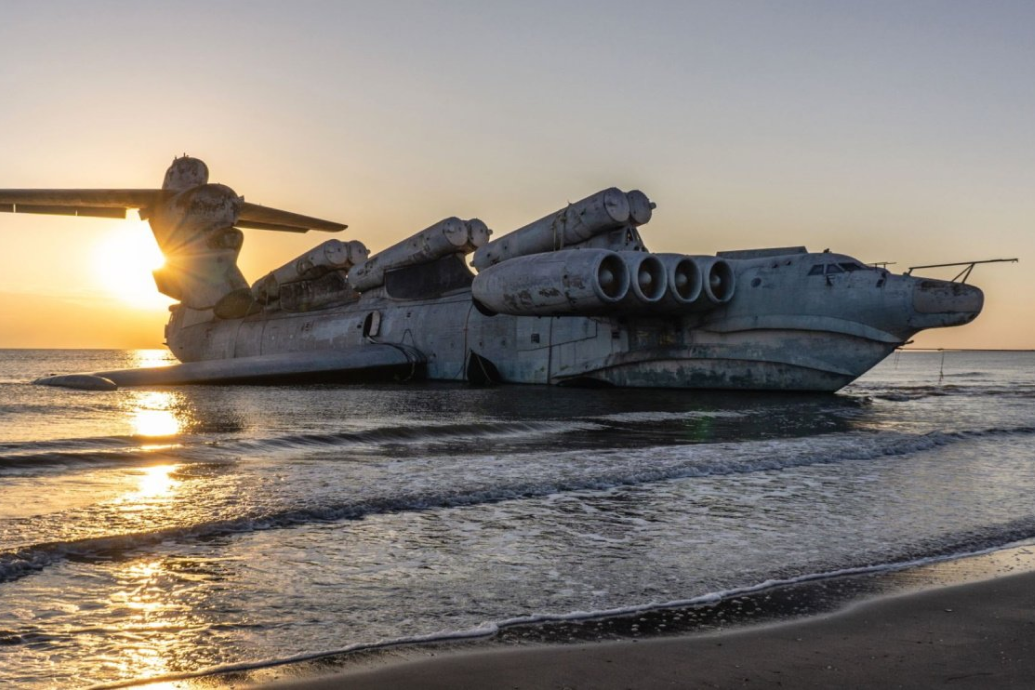The Ekranoplan: The Top-Secret Soviet Plane that Never Was
With its tiny wingspan, this secret Soviet ship flies just above the waves at speeds of 550km/h. But, just one ship was ever launched.

With its short wingspan, the top-secret Soviet naval ship looks more at home beneath the waves than above them. Named after the Russian word for the harrier, the bird of prey, the 350-ton Lun-class ‘Caspian Sea Monster’ was classified as a ship by the International Maritime Organization, flies just a few metres above the waves at speeds of up to 550 kilometres per hour. But just one ship was ever launched.
The idea of using ground effect for transportation wasn't new. German engineers had experimented with it during World War II, but the concept wasn’t brought to life until Soviet designer, Rostislav Evgenievich Alexeyev, already famous for his pioneering work on the hydrofoil, came up with the design for the Ekranoplan.
The Ekranoplan flew just one-to-five metres above the waves, taking advantage of the “ground effect”, "a cushion of high pressure that forms under the wings of extremely low-flying aircraft". The ship's proximity to the ground reduces drag, which in-turn increases speed and fuel efficiency. The combination of stealth and speed made the Ekranoplan a formidable military vehicle, and could give the Soviet Union an edge in Cold War naval warfare.
The Ekranoplan represented an asymmetric response to the U.S.'s growing carrier groups. Soviet military doctrine emphasised the need for rapid, unpredictable attacks to neutralise superior Western forces. It could evade aircraft radar and ship torpedoes, and had six nuclear missiles along its spine. Each missile was powerful enough to destroy an aircraft carrier.

The Ekranoplan could launch missile strikes against U.S. carriers, bypassing traditional naval defences and escaping before retaliation could occur. With a top speed eight times that of the fastest U.S. aircraft carrier, the Ekranoplan had the potential to revolutionise naval warfare.
In 1987, the first Ekranoplan entered into service of the Soviet Navy. Despite its promise, the Ekranoplan had several key drawbacks. It could not fly when seas were even mildly rough. It also could not ascend to higher altitudes. The requirement for calm seas to operate and inability to fly above them when they weren't, limited the ship's usefulness from the very beginning.
Only one craft was built before the program was halted. A second vessel, Spasatel or "Rescuer," was nearly complete by the time the Soviet Union collapsed in 1991. Unlike its predecessor, the Spasatel was envisioned as a mobile field hospital that could be rapidly deployed to coastal areas, showcasing how Soviet priorities shifted in its final years from military aggression to humanitarian aid. For the next 30 years, the one completed Lun-class Ekranoplan sat at the Kaspiysk Naval Base in Dagestan.

Today, start-ups like Regent Craft are building ground effect vehicles as a more fuel-efficient alternative to traditional ships. By flying just above the water, these vehicles reduce drag and conserve energy, offering an environmentally friendly solution for freight and passenger travel.





